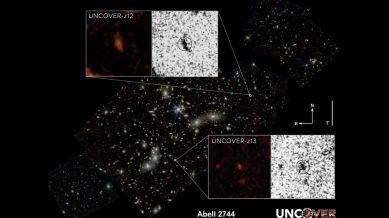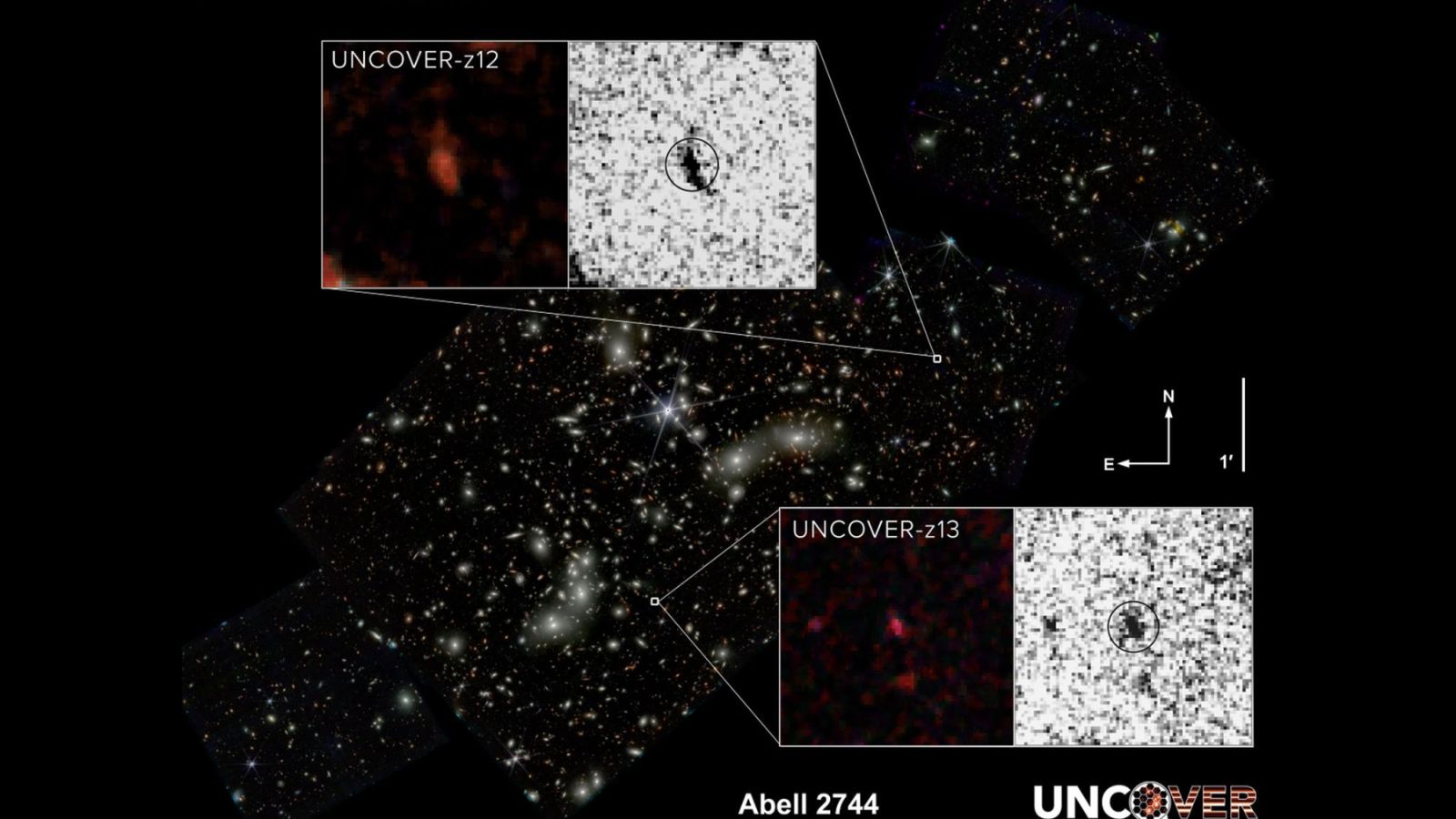Scientists used the James Webb Space Telescope to find the second and fourth most distant galaxy ever discovered in history. They are around 33 billion light-years away.

Scientists used the James Webb Space Telescope to discover the second and fourth-most distant galaxies in a part of space known as Pandora’s cluster.
At nearly 33 billion light-years away these unbelievably distant galaxies help us learn about how the earliest galaxies may have formed. Usually, galaxies at this distance appear in images as red dots, these new galaxies appear larger and look like a “peanut and a fluffy ball” according to researchers who authored a paper published in the journal Astrophysical Journal Letters.
You have exhausted your
monthly limit of free stories.
Read more stories for free
with an Express account.
Continue reading this and other premium stories with an Express subscription. Use promo code DIWALI30 to get 30% off.
This premium article is free for now.
Register to read more free stories and access offers from partners.
Continue reading this and other premium stories with an Express subscription. Use promo code DIWALI30 to get 30% off.
This content is exclusive for our subscribers.
Subscribe now to get unlimited access to The Indian Express exclusive and premium stories.
Most Read
Tiger 3 box office collection day 2: Salman Khan’s spy thriller delivers biggest Monday in Hindi cinema history, eclipses this Jawan record
Tiger 3 box office collection Day 3 early reports: Salman Khan’s actioner witnesses dip in revenue
Since they are around 33 billion light-years away, we are seeing them as they were a long time ago. The researchers estimate that the light detected by Webb telescope was emitted by the galaxies about 13.4 billion light-years ago, according to the Pennsylvania State University. At that time, the universe was about 330 million years old. The galaxies are currently 33 billion light-years away from us because of the expansion of the universe over time.
The James Webb Space Telescope took deep field images of Pandora’s cluster in 2022. There were more than 60,000 sources of light in the images. That region was selected because it was located behind many galaxies that can create an effect called gravitational lensing. Essentially, the gravitational pull of a foreground galaxy bends the space around, warping light coming from behind and acting as a kind of magnifying glass.
The researchers also used computational models to reveal the properties of these early galaxies. As expected, the two young galaxies were young had few metals in their composition and were growing rapidly and actively forming stars.
© IE Online Media Services Pvt Ltd
First published on: 15-11-2023 at 12:48 IST

Shambhu Kumar is a science communicator, making complex scientific topics accessible to all. His articles explore breakthroughs in various scientific disciplines, from space exploration to cutting-edge research.


